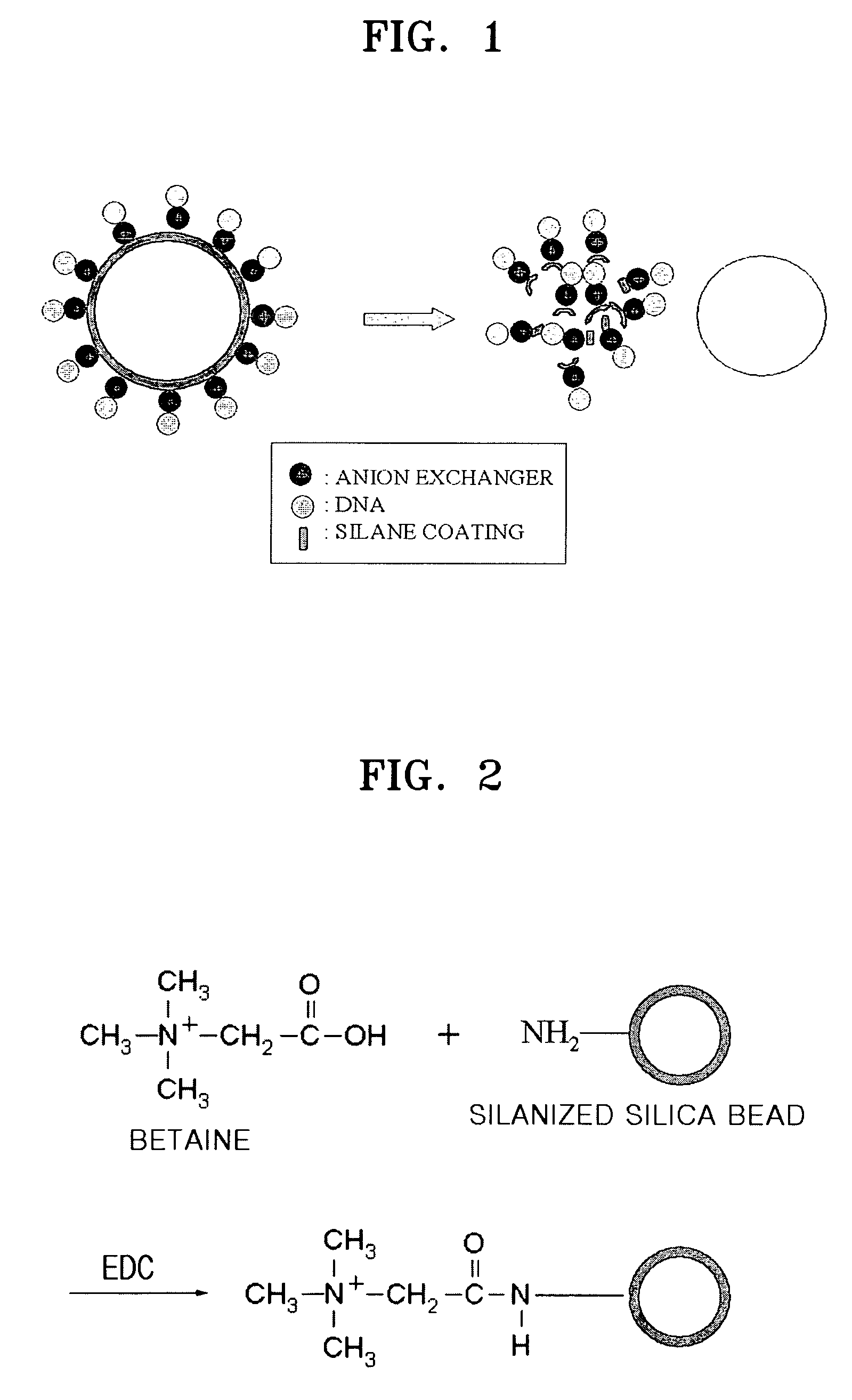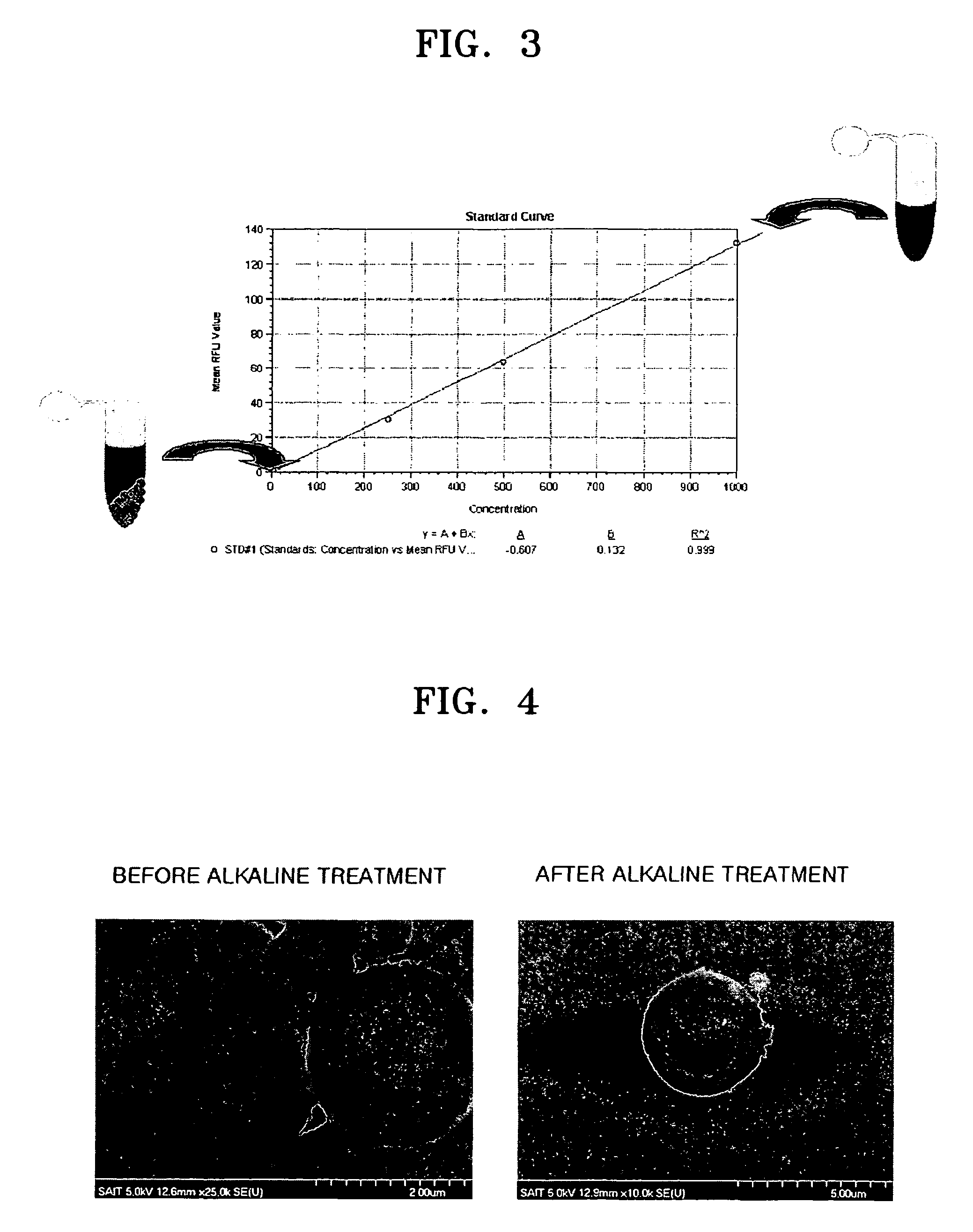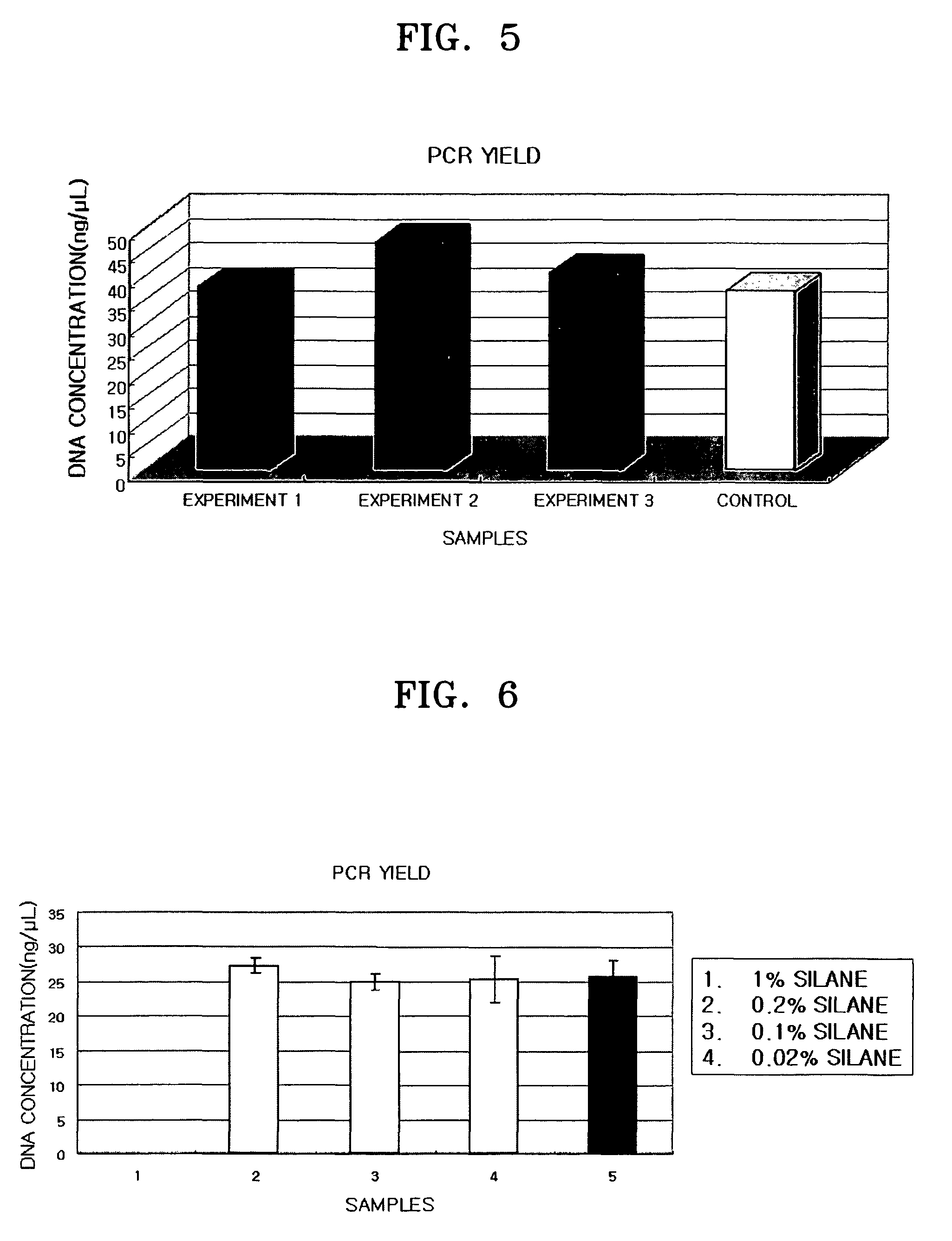Methods of isolating and amplifying nucleic acids using silanized solid support
a solid support and nucleic acid technology, applied in the direction of automatic teller machines, instruments, organic chemistry, etc., can solve the problems of amplification of nucleic acids, remarkably reduced solid-phase pcr yield, and difficult separation of nucleic acids from alumina, so as to increase the product yield of subsequent pcr and increase the yield of pcr. , the effect of high efficiency
- Summary
- Abstract
- Description
- Claims
- Application Information
AI Technical Summary
Benefits of technology
Problems solved by technology
Method used
Image
Examples
example 1
[0054]-Preparation of Anion Exchanger-bound Silica Beads
[0055]Silica beads (3 μm in diameter, Bangs Laboratories, Inc., Fishers, Ind., US) were silanized with aminopropyltriethoxysilane as follows.
[0056]That is, the silica beads were three times washed with acetone, treated with a solution of 10% aminoproyltriethoxysilane in acetone at room temperature for two hours, and washed with acetone and PBS buffer.
[0057]Then, the silanized silica beads were allowed to react with betaine in the presence of 0.4M EDC used as a linker at room temperature in a 0.05 M MES buffer for 3 hours, to obtain betaine-bound silica beads (see FIG. 2).
[0058]-Binding of Silica Beads with DNAs
[0059]2 μl (539 ng / L) of 50 kb λ DNAs (Promega) were loaded in a microtube and 58 μl of a PBS solution was added thereto. The resultant DNA solution was mixed with 2.9 mg of the silanized silica beads and stirred at room temperature for 15 minutes.
[0060]Then, to evaluate degree of DNA binding, before and after mixing of t...
example 2
[0065]According to the same manner as in Example 1, 2.9 mg of silanized beads were allowed to react with 400 ng of HBV plasmid DNAs, washed with PBS buffer, and centrifuged to thereby collect the resultant beads. The collected beads were added to 39 μl of a 0.1 N NaOH solution and heated to remove silane coating from the beads. The resultant solution was again centrifuged to take a supernatant. The supernatant was neutralized by addition of 1 μl of 1 M Tri-HCl (pH7). PCR for 1 μl of the resultant neutralization solution was performed as follows.
[0066]The following PCR primers were used:
[0067]
primer A(5-AGTGTGGATTCGCACTCCT-3);(SEQ ID NO: 1)andprimer B(5-GAGTTCTTCTTCTAGGGGACCTG-3).(SEQ ID NO: 2)
[0068]PCR was performed using Taq polymerase (Takara, Solgent, Korea) as follows: pre-denaturation at 95° C. for 5 minutes, 25 cycles (denaturation at 95° C. for 30 seconds, annealing at 62° C. for 15 seconds, and extension at 72° C. for 30 seconds), and additional extension at 72° C. for 3 min...
example 3
[0072]EcoRI Treatment
[0073]In this Example, 1 g of λ DNA obtained in Example 1 was used as a DNA sample. The DNA sample was digested with 5 units of EcoRI (NEN Life Science Products, Boston, Mass.) at 37° C. for one hour and then run on 1% agarose gel. As a result, electrophoretic patterns of FIG. 8 were obtained (see lanes 2 and 3). In FIG. 8, lane 1 represents 5 units of EcoRI digests of 1 g of untreated λ DNA and lane 4 represents undigested λ DNA. Referring to FIG. 8, when λ DNA obtained according to a nucleic acid isolation method of the present invention was treated with restriction enzyme (lanes 2 and 3), the same electrophoretic patterns as lane 1 were obtained, which demonstrates non-toxic effect of the nucleic acid isolation method of the present invention.
[0074]According to the present invention, isolation and purification of nucleic acids can be performed even without using a toxic substance such as a chaotropic salt and EtBr unlike a conventional technique. Furthermore,...
PUM
| Property | Measurement | Unit |
|---|---|---|
| pH | aaaaa | aaaaa |
| diameter | aaaaa | aaaaa |
| pH | aaaaa | aaaaa |
Abstract
Description
Claims
Application Information
 Login to View More
Login to View More - R&D
- Intellectual Property
- Life Sciences
- Materials
- Tech Scout
- Unparalleled Data Quality
- Higher Quality Content
- 60% Fewer Hallucinations
Browse by: Latest US Patents, China's latest patents, Technical Efficacy Thesaurus, Application Domain, Technology Topic, Popular Technical Reports.
© 2025 PatSnap. All rights reserved.Legal|Privacy policy|Modern Slavery Act Transparency Statement|Sitemap|About US| Contact US: help@patsnap.com



